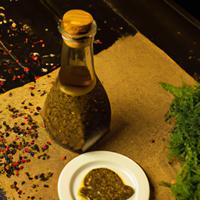
1 serving (30 grams) contains 60 calories, 0.0 grams of protein, 5.0 grams of fat, and 3.0 grams of carbohydrates.

Log this food in SnapCalorie

Nutrition Information
Calories |
472.4 | ||
|---|---|---|---|
% Daily Value* |
|||
| Total Fat | 39.4 g | 50% | |
| Saturated Fat | 3.9 g | 19% | |
| Polyunsaturated Fat | 0 g | ||
| Cholesterol | 0 mg | 0% | |
| Sodium | 2362.2 mg | 102% | |
| Total Carbohydrates | 23.6 g | 8% | |
| Dietary Fiber | 0 g | 0% | |
| Sugars | 15.7 g | ||
| protein | 0 g | 0% | |
| Vitamin D | 0 mcg | 0% | |
| Calcium | 0 mg | 0% | |
| Iron | 0.8 mg | 4% | |
| Potassium | 78.7 mg | 1% | |
* Percent Daily Values are based on a 2,000 calorie diet. Your daily values may be higher or lower depending on your calorie needs.
Food Attributes
Source of Calories
About Mustsrd dressing
Mustard dressing is a tangy and versatile condiment made by blending mustard—typically Dijon or yellow—with ingredients like vinegar, oil, honey or sugar, and spices. Sometimes herbs or citrus juice are added for variation. Originating from French and European cuisines, mustard dressing brings a zesty flavor to salads, sandwiches, and marinades. Nutritionally, it tends to be low in calories but can vary based on added sweeteners or fats. The mustard itself is a source of antioxidants and compounds like selenium, which may support immune health. However, if sugar or high amounts of oil are included, the caloric and sugar content can increase significantly, making it important to check labels or make your own version at home to control the ingredients. Perfect for adding a punch of flavor, this dressing complements a variety of dishes without overpowering them.



